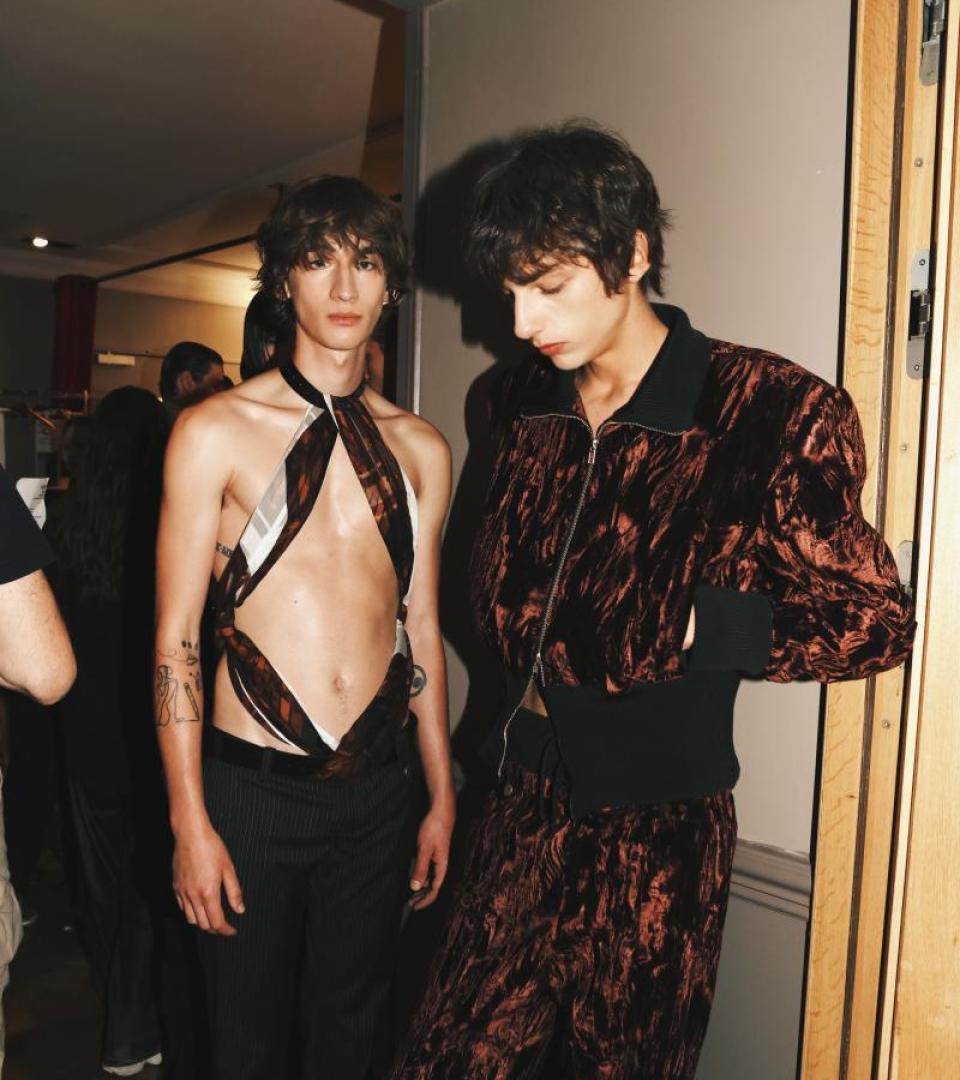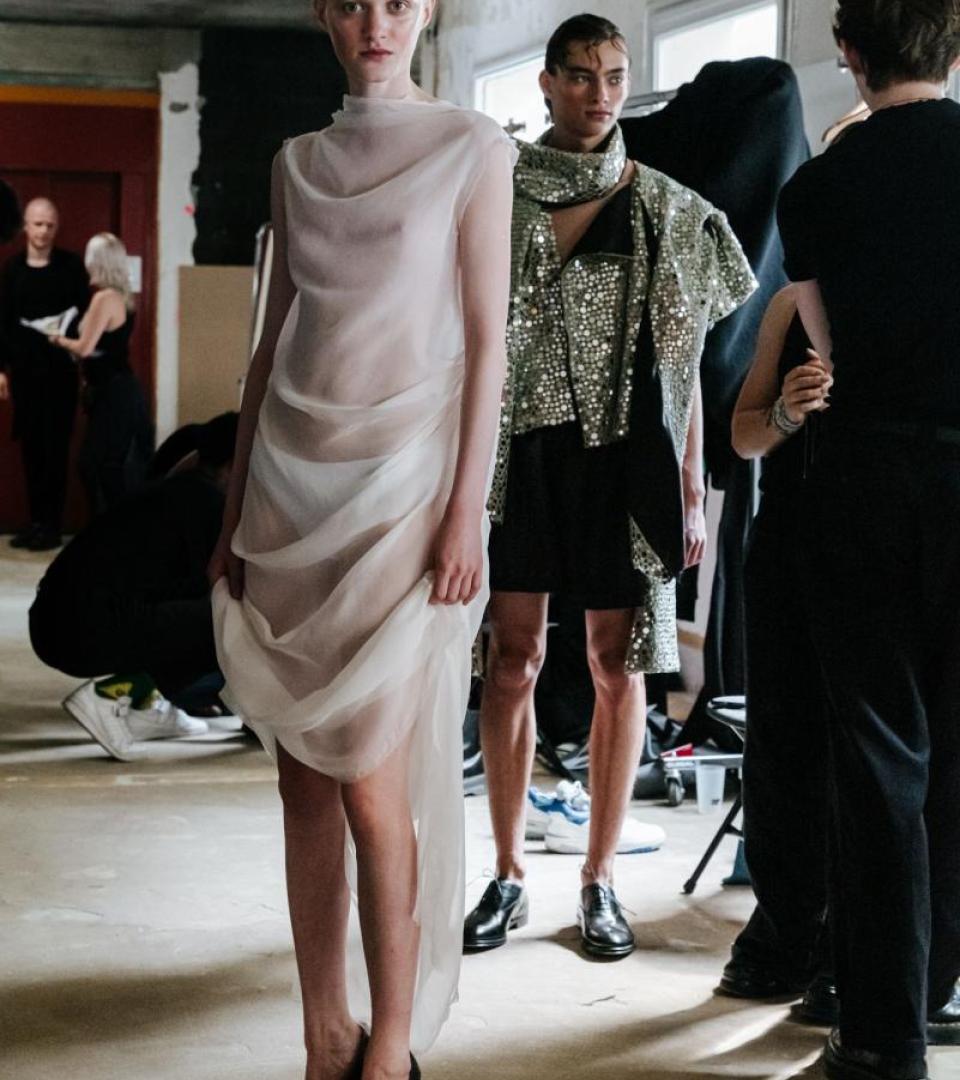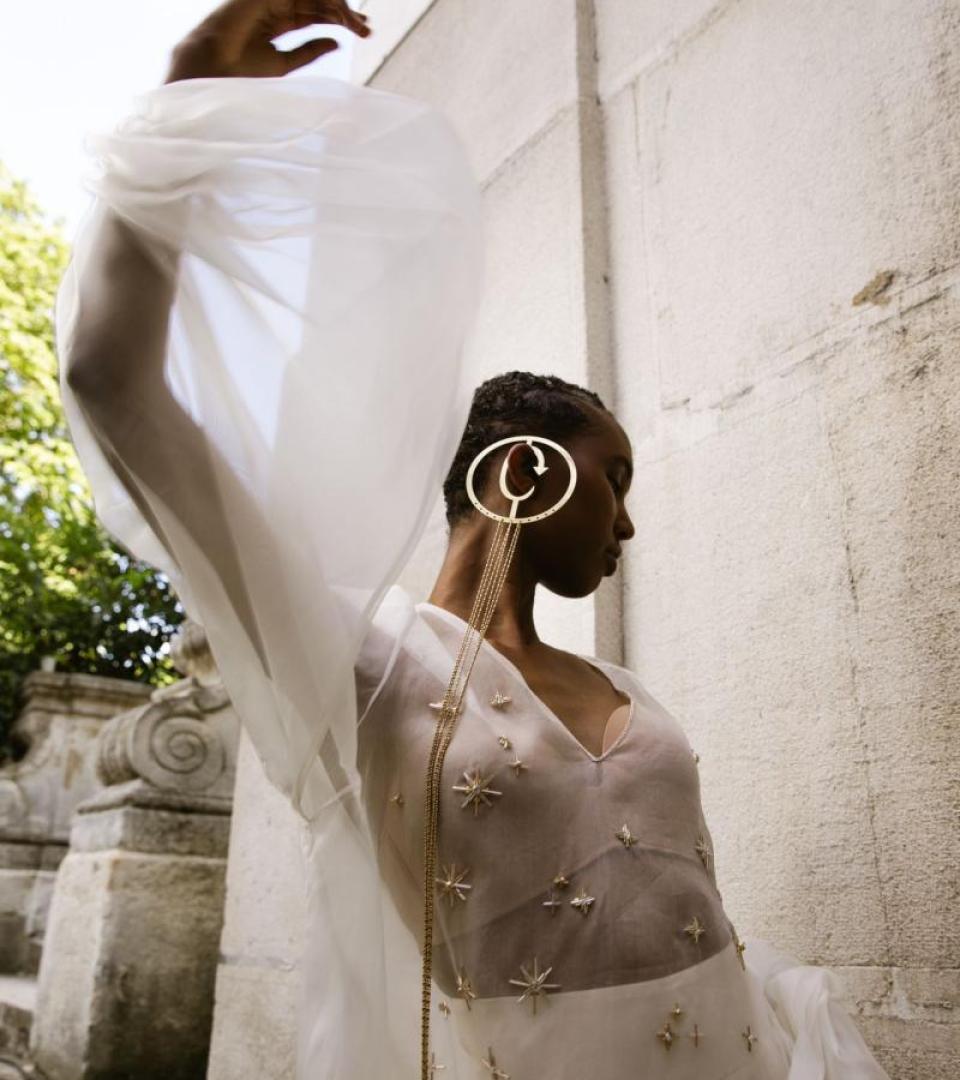Interview: Lauren Houssin managing director of Bureau Future & Guillaume Troncy, co-CEO of Bureau Betak and Bureau Future.
Talent, production, and imagination since 2016
"What was originally known as "digital" content has increasingly become campaign material, both image and product".

Paris, New York, Los Angeles, Milan... Around 15 in-house staff, and more than 60 projects planned for 2024. Founded by Alexandre de Betak in 2016, the Bureau Future communications agency spans Europe, Asia and the United States, employing a large number of freelancers around the world. The “digital creative agency” has established itself as the standard-setter in a highly competitive sector, an organic development model that has managed to preserve its identity. “The goal was to expand the audience for fashion shows to a global audience in real time, reaching beyond the physical guests. Since its inception, Bureau Future has also been a response to the booming use of social networks, as brands have become their own media and there is a tremendous need for constant and intelligent content creation,” say Guillaume Troncy and Lauren Houssin of Bureau Betak and Bureau Future, now a partner of the FHCM. Troncy, a graduate of Kedge Business School with an MBA, is also a partner in Bureau Betak and Bureau Future, which he joined in 2013. Houssin graduated in Media & Communications from the London School of Economics in 2012 and began her career in journalism, working for the New York Times, CNN and Libération. She joined Bureau Future in 2017, shortly after it was set up by Alexandre de Betak, and became its director in 2020.
What makes the agency unique?
Its origins and its deep ties to fashion shows. Bureau Future was born out of Bureau Betak, with a fashion point of view and culture. The ability to capture a fashion show and a fashion image requires very specific skills. The light, the beauty of the models, the interpretation of the looks and accessories, together with the atmosphere that contributes to the storytelling and the image of the fashion houses. All these elements are combined to create a digital fashion object. We are one of the few agencies dedicated to this content segment, and able to manage a project in-house from conceptualisation through to post-production.
Its strengths?
The ability to adapt, to move from one house to another while maintaining a deep understanding of each customer's identity and requirements. We're able to do this thanks to our highly versatile in-house team, but also thanks to the people we call on for specific expertise, whether it's talent or a technical service provider. For example, we won't choose the same cinematographer or editor for an Acne Studios or an Alaïa project. Every player involved in a production is essential to its success. This means that we have to keep a constant eye on the market. We always try to remain a driving force, while being ready to change direction when the brief evolves or changes.
What do you consider to be the major changes in terms of demand and achievements?
Content that was originally 'digital' has increasingly become campaign material, both image and product. Bureau Future is now handling more and more projects outside the catwalk, including several digital campaigns, notably for Tom Ford and Carolina Herrera, and recently videos showcasing savoir-faire for Louboutin, Fendi and Berluti. We hope to keep diversifying the nature of our projects and why not do more lifestyle and beauty content.
How is Bureau Future involved in the fashion shows for the FHCM?
We're working on coverage of a selection of emerging fashion houses, such as Duran Lantink, Ester Manas, Vaquera and Zomer, in collaboration with the Fédération's editorial committee. This week we'll be on the catwalks of Auralee, KidSuper and Yuima Nakazato. We're trying to take a fresh, new approach to highlighting new talents, covering the fittings, backstage, catwalk and an interview with each designer. A format halfway between reportage and editorial, which is part of Bureau Future's DNA.
In what way is Bureau Future adaptable and ahead of the curve in terms of innovation and digital evolution?
Our adaptability lies above all in optimising the high point of a fashion show by multiplying the number of collaborations with talents, the number of so-called satellite activities and therefore the opportunities for content creation. Photographers and directors coexist on adjacent sets and contribute to a global vision, rather than working on separate tracks. In this context of a 360-degree communications strategy, quantity and quality are not mutually exclusive, and we are adapting to developments in digital, notably by developing the live experience in order to reach more and more online audiences. For some brands, the pre-show has become almost as important as the show. VIPs and influencers are often dressed in the same collection as the show, generating a lot of traffic and excitement before the show itself. We are also diversifying the streaming platforms, from TikTok to Red, WeChat, Weibo, KakaoTV but also more standard channels such as Youtube and Instagram. Depending on the platforms and the target audience, we sometimes reconsider the angles to be favoured, the looks to be emphasised, the rhythm, the music, etc. We have also done several 360 live shows and experimented with VR for the Chinese platform T Mall. The aim remains to create an experience that is as immersive and inclusive as possible.
Do you use Artificial Intelligence?
It's a subject we're obviously following closely. We're experimenting with different creative AI-based tools, but we haven't yet integrated it into our image creation processes as such. The main idea is to be ever more creative and singular, while remaining aware of its challenges and limits.
What talents do you call on?
Art buying plays an integral part in our culture. We meet a lot of photographers, film-makers, digital artists, etc. on a daily basis, and we feel it's very important to curate talent and promote a mix of expressions. Each project requires a different approach to the selection of collaborations.
We work with established artists such as Norbert Schoerner and Oliver Hadlee Pearch, but also with emerging talents. For the Jacquemus show in Valensole, we selected four art students from the region and organised a partnership with Dazed magazine to showcase their work (link here). One of the drawings even ended up on the double page of Holiday magazine (see here)!
Many of the talents we worked with when they weren't yet represented are now signed up by big agencies or production companies, including Jordan Hemingway, Massimiliano Bomba and Pablo di Prima.
We also produce a lot of things in-house, our creative team being made up of real Swiss Army knives who know how to handle image capture, retouching, editing, 3D, sound, and so on. This allows us to remain flexible in the creative management of projects.
Which projects are you most proud of?
There are a number of projects we're proud of, including some great collaborations with Jacquemus and Gucci, with whom we pushed the boundaries of feasibility and explored alternative formats, particularly during the post-lockdown period, when we needed to rethink our ways of working and give priority to filming and livestreaming.
The video of the last Maison Margiela show under the Pont Alexandre III in January was also a success. We worked very closely with the director of photography on the lighting and with the set designer on the placement of our cameras on the runway. John Galliano was also extremely involved in all the preparations for filming this show, which was a unique experience.
But above all we're most inspired by the challenges ahead.
What are your big plans for 2024?
Our biggest Fashion Week since our creation, coming up in September, with over 20 shows between New York, Milan and Paris!
This interview has been lightly edited.



